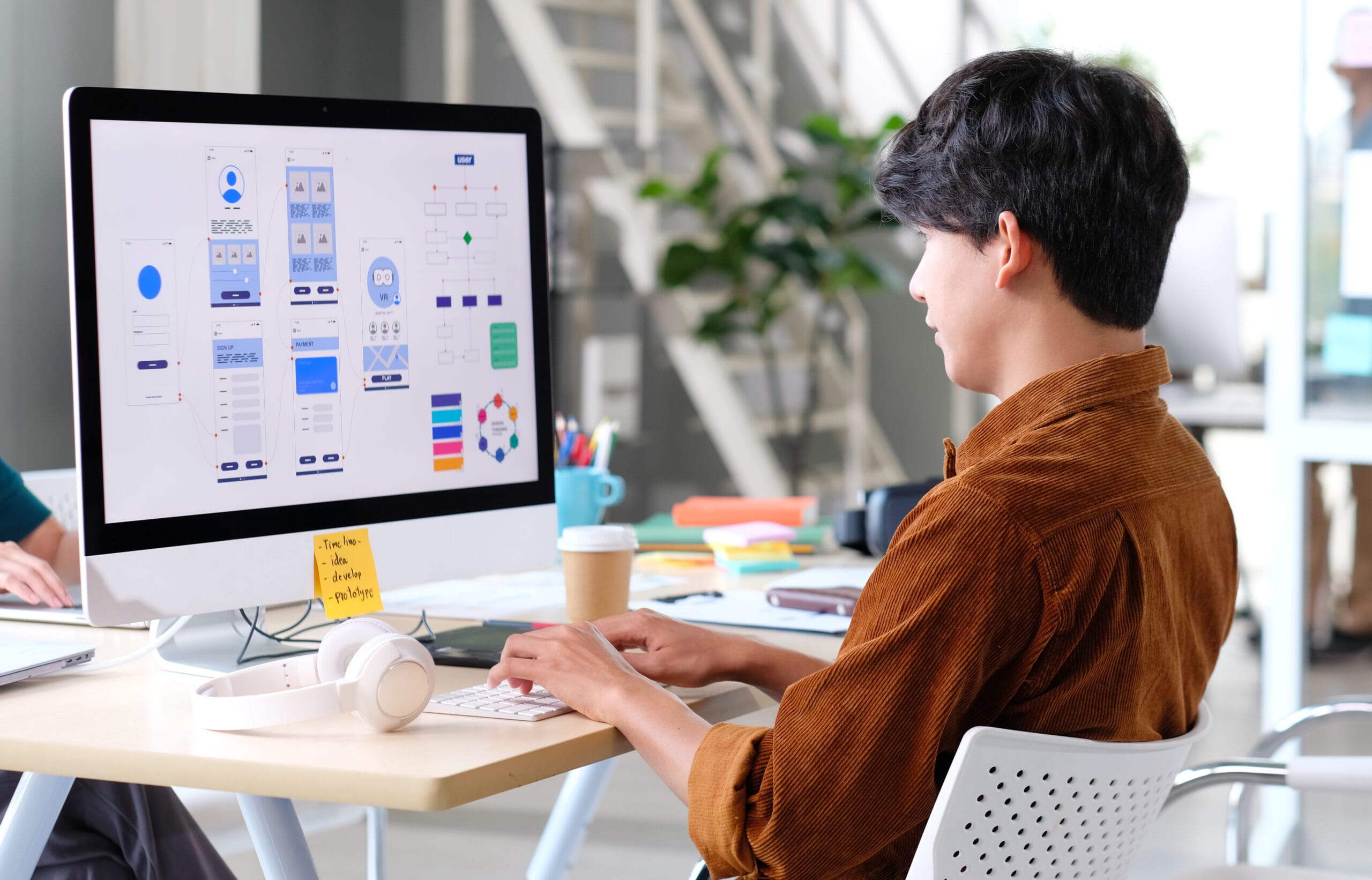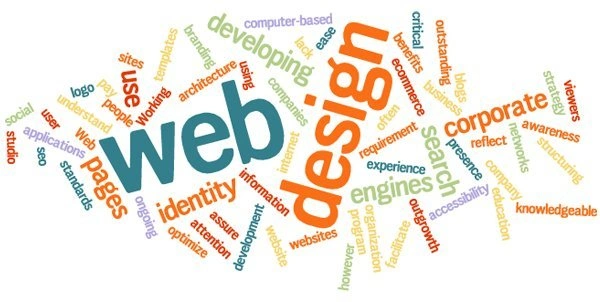Exploring Innovative Fads in Web Design for Modern Companies
The landscape of web design is constantly progressing, mirroring the vibrant needs of contemporary organizations. Current trends highlight a preference for minimalism, strong typography, and interesting interactivity. Firms significantly prioritize user experience via mobile-first concepts and tailored web content. Furthermore, an emphasis on sustainability is gaining traction. Comprehending these fads is crucial for businesses intending to stand out in a crowded marketplace. What ramifications do these changes hold for the future of digital involvement?
Accepting Vibrant Typography
Bold typography has become a defining component in modern web design, capturing focus and sharing messages with striking clearness. This pattern focuses on visually impactful text that improves user involvement and brand name identification. Developers frequently make use of special typefaces and oversized fonts to create a pecking order, assisting audiences through content seamlessly.
The tactical use of strong typography permits effective storytelling, making it possible for brands to connect their values succinctly. It offers not just visual functions but likewise practical ones, as it improves readability throughout devices and screen sizes.
As sites contend for user interest, strong typography sticks out in a saturated electronic landscape. Its convenience enables developers to try out contrasting designs and shades, even more amplifying its effectiveness. Eventually, accepting vibrant typography represents a change in the direction of more communicative and meaningful web design, cultivating a deeper link between brand names and their audiences.
The Surge of Minimalist Style
As digital atmospheres become progressively chaotic, the surge of minimal layout supplies a revitalizing choice that focuses on simpleness and capability. This design approach remove unneeded components, allowing material to take spotlight. By concentrating on tidy lines, adequate white area, and a restricted color combination, minimalist design enhances user experience and improves navigation.
Companies adopting this fad purpose to share their brand name message plainly and successfully, fostering a sense of calm and clearness. The absence of distractions helps individuals concentrate on vital details, causing enhanced interaction and conversion rates. Additionally, minimal style lines up well with mobile-first strategies, making certain that sites continue to be easily accessible and straightforward across numerous gadgets.
Ultimately, the rise of minimal style shows a wider shift in the direction of focusing on user demands and preferences, making it an effective tool for modern-day services looking to make a long-term effect in the electronic landscape.
Immersive Animations and Interactivity
While many web developers accept minimal aesthetics, one more engaging trend gaining traction is making use of immersive animations and interactivity. This technique enhances user involvement by developing appealing experiences that draw site visitors into the web content. Designers utilize vibrant elements such as animated histories, scrolling impacts, and interactive infographics to communicate complicated concepts in an obtainable way.
These computer animations not only give visual interest however additionally overview individuals via the navigating process, making interactions much more user-friendly. For circumstances, hover impacts and animated shifts can encourage individuals to explore better, leading to raised time invested on the website.
This trend aligns with the wider activity in the direction of narration in web layout, where computer animations offer as narrative devices that communicate brand name messages successfully. By integrating immersive computer animations and interactivity, organizations can separate themselves in a congested online landscape, ultimately boosting user contentment and brand name commitment.
Mobile-First Design Principles
Mobile-first style concepts highlight prioritizing user experience by making certain internet sites work effortlessly on smaller screens. This method includes responsive design methods that adjust to numerous gadget dimensions while preserving aesthetic honesty. Additionally, it concentrates on touchscreen navigating style, boosting functionality for mobile individuals.
Prioritizing User Experience
Just how can designers successfully prioritize user experience in an increasingly mobile-centric globe? Emphasizing mobile-first style principles is important, as users primarily involve with internet sites via mobile phones. This technique encourages developers to simplify material, guaranteeing it is navigable and quickly obtainable on smaller sized screens. Trick practices include simplifying navigation, minimizing lots times, and using touch-friendly elements that boost interactivity. Furthermore, focusing on readable typography and user-friendly formats can considerably improve user contentment. Developers need to continuously gather user feedback to refine their methods, adapting to evolving user requirements and choices. By concentrating on these components, businesses can create an engaging electronic experience that promotes commitment and drives conversions, inevitably lining up with the expectations of today's mobile customers.
Responsive Design Techniques
Developers welcome responsive design methods to produce versatile and adaptive web experiences that accommodate look at more info various screen dimensions. This approach prioritizes mobile-first layout concepts, making sure peak functionality on smaller devices before scaling up for bigger screens. By using liquid grids, versatile photos, and media queries, developers can preserve a cohesive visual identification across all platforms. This method not only boosts user interaction but also improves online search engine positions, as mobile-friendly websites are favored by search algorithms. In addition, responsive layouts enable organizations to get to a broader target market, fitting customers on smart devices, tablets, and desktop computers alike. On the whole, applying these strategies is crucial for modern-day web design, making sure that businesses stay competitive in an ever-evolving digital landscape.
Touchscreen Navigation Design
With the increase of smart phones, touchscreen navigation has actually become a fundamental aspect of web design. Developers are increasingly embracing mobile-first principles to boost user experience and engagement. agency for web design. Reliable touchscreen navigation focuses on larger switches and intuitive gestures, permitting individuals to connect easily with material. This technique lowers disappointment and urges exploration, as users can navigate flawlessly with their fingers. Furthermore, including swipe gestures and faucet performance accommodates the natural behaviors of mobile users. Feedback systems, such as visual hints and computer animations, enhance functionality better by validating actions. As touchscreens dominate user interactions, employing these style components not only lines up with contemporary assumptions however likewise promotes a much more satisfying and available searching experience for all individuals
Individualized User Experiences
What makes a user really feel genuinely engaged on a website? The response usually depends on customized user experiences. By tailoring web content and navigation to private preferences, organizations can develop a meaningful connection with their target market. This personalization can be attained via various techniques, such as assessing user habits, utilizing cookies, and offering tailored suggestions based on previous interactions.
Ecommerce platforms that recommend items based on searching background not only improve user experience however likewise boost conversion rates. Additionally, incorporating vibrant content that adjusts to the user's location or time of day can even more enrich engagement.
Furthermore, tailored introductions or messages can make users feel valued and recognized. As contemporary services endeavor to stick out in a competitive digital landscape, welcoming personalized user experiences ends up being vital, fostering loyalty and motivating repeat visits. Ultimately, this method changes a standard internet site into an interactive system that reverberates with its target market.
Sustainability in Web Design
As the electronic landscape proceeds to advance, the value of sustainability in web design has actually obtained considerable attention. Developers are increasingly knowledgeable about the ecological impact their productions can have, triggering a shift towards green techniques (Website Design Agency). Lasting web design concentrates on enhancing sites to reduce energy usage and carbon footprints. Approaches consist of making use of minimalistic design concepts, maximizing images, and using effective coding techniques to improve loading speeds
The selection of organizing carriers plays a crucial duty; lots of designers are currently choosing for see this here eco-friendly hosting services powered by sustainable power. By prioritizing accessibility and easy to use navigation, lasting styles also accommodate a broader target market, improving usability. This aware technique not just attract environmentally-minded customers yet likewise contributes to the overall durability and efficiency of internet sites. Ultimately, sustainability in web design reflects a growing trend towards accountable digital practices that line up with modern-day company worths.

Often Asked Questions
Exactly How Can I Choose the Right Color Design for My Site?
To pick the right color design for a web site, one should think about the brand name's identification, target market, and psychological influence. Utilizing color concept and screening mixes can improve user experience and aesthetic allure considerably.
What Are the most effective Tools for Prototyping Web Layouts?
The best devices for prototyping website design consist of Figma, Lay out, Adobe XD, and InVision. These systems supply intuitive interfaces, cooperation attributes, and comprehensive collections, making them ideal for designers to create and refine their concepts successfully.
How Do I Gauge the Efficiency of My Web Design?
To gauge web design performance, one must analyze his explanation user involvement metrics, conversion rates, and functionality comments (Web Design services). A/B screening and heatmaps can additionally supply insights right into user habits, assisting necessary changes for enhanced performance and user experience
What Are Common Web Design Mistakes to Stay Clear Of?
Typical web design mistakes consist of messy layouts, bad navigation, sluggish filling times, lack of mobile optimization, insufficient comparison, and overlooking user feedback. Avoiding these challenges improves user experience and enhances general effectiveness of the website.
Just how Commonly Should I Update My Site Layout?
A website layout must be updated every 2 to 3 years, or earlier if substantial modifications in branding or innovation occur. Routine updates keep the website fresh, functional, and straightened with present user assumptions.
